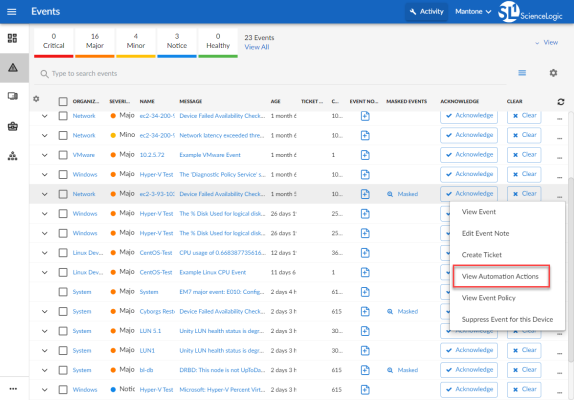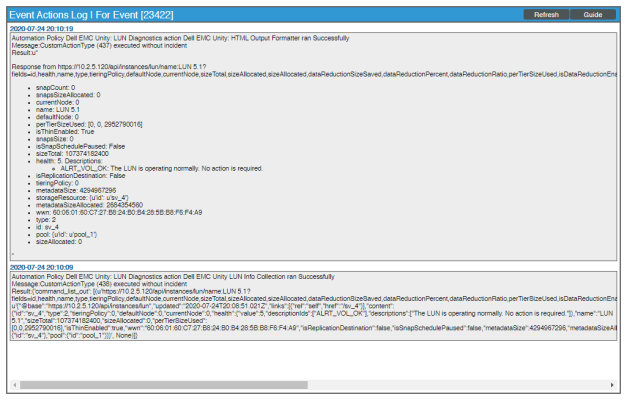This
Standard Automation Policies
The Dell EMC Unity Automations PowerPack includes two standard automation policies, shown in the following figure. Each policy triggers an automation action that collects diagnostic data from the Unisphere REST API and adds the output to the SL1 event log or associated incident.
All of the standard automation policies are tied to included ScienceLogic SL1 events generated by the Dynamic Applications from the Dell EMC: Unity PowerPack.
The following table shows the standard automation policies, their aligned events, and the automation actions that runs in response to the events.
The aligned events are included as part of this PowerPack and are not installed with the SL1 platform. You must install the PowerPack to obtain these events.
| Automation Policy Name | Aligned Events | Automation Action |
|---|---|---|
| Dell EMC Unity: LUN Diagnostics |
|
|
| Dell EMC Unity: Storage Pool Diagnostics |
|
|
The following figure shows a file system usage threshold exceeded event with major criticality on the Events page. Click the [Actions] button () for an event, and select View Automation Actions to see the automation actions triggered by the events.
The results shown for this event, in the Event Actions Log, include the automation policy that ran (shown at the top of the following figure), along with the automation actions (commands) that ran. Results for each command are also displayed. The following figure shows an example of this output.
To learn more about which commands are executed by default for a given automation action, see Customizing Actions.
Although you can edit the automation policies described in this section, it is a best practice to use "Save As" to create a new automation policy, rather than to customize the standard automation policies.

